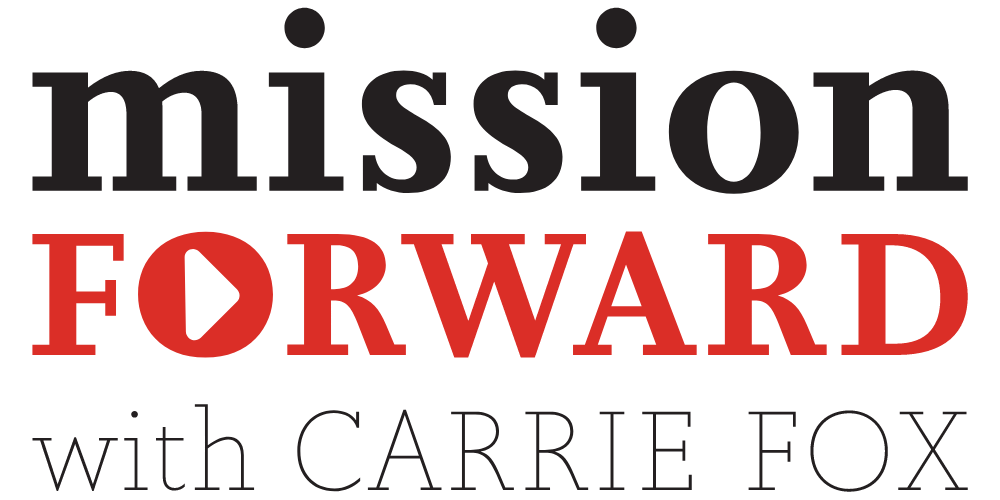What Are You Hearing?
This article is part of Finding the Words, a newsletter that delivers practical insights on the day’s issues.
Have you ever found yourself in one of these two scenarios:
You are presenting to a crowd, and you can feel the eyes of the room glazing over. You’ve lost your audience and need to figure out how to win them back.
You’re in an audience and can’t hear anything the presenter is saying because of a word, phrase, or point of view they shared. You’re too distracted to listen any further.
I’m confident these scenarios resonate with you because we’ve all been there, on one side or the other. We’re either fighting to be heard or fighting back against what we’re hearing. There seemingly is no middle ground.
Because these scenarios are so common, it’s natural to wonder: how will we ever come together on hard issues if we can’t get past the words? And, how can we ever present content so that our audiences can listen—and, more importantly, listen without judgment?
The answer is radically simple but takes radical practice.
It starts with how we choose to listen.
In my book More Than Words, I present a framework for radical listening: how to listen at a deeper level, where all good and effective communications begin. Whether we are the presenter or the audience member, we all want to be heard. And to be heard, we must first listen.
Consider This:
There will be words, phrases, and actions that distract you in the coming months—maybe even the coming days. There will be words that make you feel angry and perhaps even enraged. In these moments, it will be hard for you to listen. And it will be easy to shut down or dismiss the person who raised a challenging point of view.
When we are not ready to listen, then everything we hear comes with a bias. We listen with an agenda for how information benefits or affects us personally. And we listen for what we can say to push back against the speaker. In the process, we become so focused on what we didn’t like that we miss nearly everything being said—including the context that could have helped us understand the content.
Radical listening, on the other hand, isn’t all that radical, but it is focused: listening without preconceived notions. Listening to understand and listening to learn. Radical listening requires appreciation for the speaker, even if we disagree with their point of view. Radical listening requires focused attention without considering what we'll say next.
Radical listening can help you get closer to others if you are the presenter OR the audience member.
Put it into Practice:
If you’re the presenter: Consider starting your next presentation with a question. Seek to understand where your audience is on an issue to help you gauge how you communicate and connect on complex topics. This opening approach can help ensure you meet your audience where they are and stay connected with them throughout the conversation rather than speak at them. For instance, maybe some of your terminology is complicated or holds multiple meanings. To ensure your audience can receive your messages, start your presentation by listening. For instance, “I’ll be sharing some complicated topics today and would like first to gauge this group’s understanding of a few key terms. I’ll also provide definitions of some important phrases to ensure we’re all coming to today's conversation with a shared understanding."
If you’re the listener: Consider having a notebook handy to jot down any words or phrases that sit strangely with you. “Park” those words or phrases, and then continue to listen to the speaker to see if they provide context that can help inform your understanding. And if that’s not the case, then at a natural moment (without interrupting), ask the presenter to explain. For instance, “I appreciate how you’re laying out some historical information for us, but I’m having trouble understanding the use of a certain term you used a few moments ago. Can you tell me more about this concept of X so I can do my best to understand you?”
Both examples reinforce what radical listening can look like: listening with a beginner's mindset, and without judgment.
Take Action:
Whether we are the speaker or the audience, we can use every interaction to listen carefully and learn more. What if you practiced radical listening in your workplace this week? What might change in how you receive, process, and retain information from across perspectives? And might that adjustment bring you closer to the people around you?
Bottom line: Listening matters. If you're working for progress of any kind, you have a responsibility to listen—carefully and intentionally. Find ways to get closer to the audience, the content, and the presenter, and use these moments as opportunities to understand the information being shared with you. I guarantee you'll be surprised at how much you can learn.
This post is part of the Finding The Words column, a series published every Wednesday that delivers a dose of communication insights direct to your inbox. If you like what you read, we hope you’ll subscribe to ensure you receive this each week.







I know the feeling of wanting more from a colleague—and the feeling of personally underdelivering. Even when I’ve given something my all, sometimes the results are less than I hoped. Those moments can be defeating, and they can knock us off course. If they happen too often, they’re a certain recipe for job transition. So, I’ve come to navigate these requests differently in recent years.